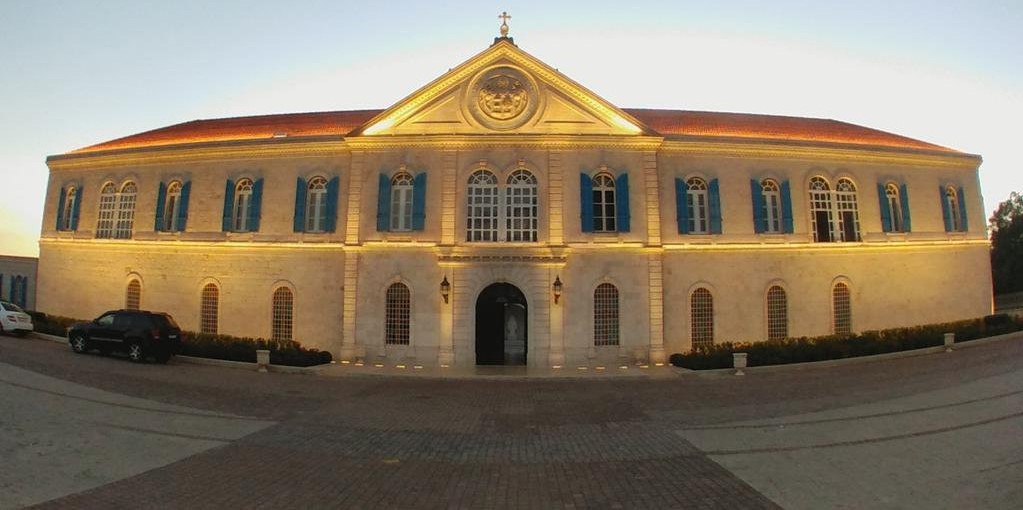
The convent of the Lady of Bkerki was transformed to winter residence of the Maronite Patriarch by a decree in 1790. "The convent of Bkerki will be the permanent Patriarchal See instead of the convent of Our Lady of Qannoubine". This decree was not implemented until 1830, during the Patriarch Joseph Hobeiche's time who settled at Bkerki. Until today, his successors spend there, all winters. The decree transferring the residence to Bkerki was the sign of a radical change in Lebanon's history. After being a place of refuge, Lebanon became a home; and after being a refugee, The Maronite Patriarch felt responsible for a precious trust: "The Glory of Lebanon".
The Patriarch’s residence is around twenty kilometers from Beirut. It is situated up a green hillside in Keserwan at 200 m. of altitude. It has a panoramic view of the marvelous bay of Jounieh. The Christians of all communities come on Sundays and on feast days, to participate in the service celebrated in the church by his Beatitude the Patriarch and to listen to his fatherly sermon. During the year, groups of different classes and regions come to express to his Beatitude their complaints and to implore his help: first his advice, and then his intervention. Moreover, all the responsible personalities, the Lebanese and the foreigners go to Bkerki to inform his Beatitude of the current events and to demand his advice. The See of Bkerki is unique in the world. It is a Lebanese religious reference; it is also an international reference.
It is not surprising that Bkerki archives contain very precious documents as for their ancientness and variety. One of the documents dates back to the thirteenth century. It is the letter sent by the Pope Innocent III to the Patriarch Jeremy Amchiti inviting him to participate in the Lateran ecumenical council of Lateran. This letter was written in Latin, on deer leather in 1215.
The Convent of the Lady of Diman It is the summer residence of the Maronite Patriarch. The Patriarch Elias Howayek (1899 - 1931) decided in his first year of Patriarchate, to build it on a high hill of 1350m. over-looking the Holy Qadisha Valley where the convent of Qannoubine, the former patriarchal see (1440-1830) is situated. That is why the Patriarch Howayek called it "the New Qannoubine". He put the inaugural stone on the 28th of September 1899. Later, he asked his nephew the painter Youssef Saadallah El-Howayek to paint the Assumption of the Virgin Mary on the main apse. The Patriarch Antoine Arida (1932-1955) built the beautiful church which remains a rare wonder, thanks to the great inspiration and to the exceptional talent of the painter Saliba Doueihi who decorated the ceiling and the walls of the church with beautiful paintings: The apotheosis of the Christ risen and ascending to Heaven, the apotheosis of Mary in her Assumption and crowning, the apotheosis of the earth nature, God's creation.

The church of St. John the Baptist is situated in the heart of the town where Cadmus took the alphabet to all over the world. The construction started with the Crusades in 1115, but the western façade is entirely modern.
The domes are purely of Roman style. The south portal dates back to the end of the twelfth century. The baptistery, built around 1200, is purely Roman. The sculptures and the rosettes mark an Italian influence, which is comprehensible in a town that was a Genoese domain.
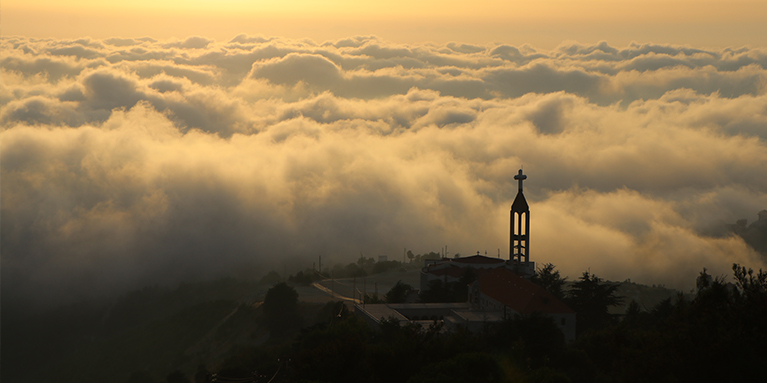
The road from Jbeil goes up towards the convent of St. Maroun Annaya, which belongs to the Lebanese Maronite Order, and is situated on a 1200 m altitude. It was built in the 19th century, and in 1832, the Lebanese Order connected to it the hermitage on the top of the hill at a 1400 m altitude. St. Charbel Makhlouf had the favor to live there until his death on the 24th of December 1898. Actually, in the convent of St. Maroun, there is a room where the body of the Saint is lying. Pope Paul VI canonized him on October 9th, 1977.
His feast day is celebrated on the 18th of July. The large church, as well as the squares around the convent, are then crowded with all faithful who come to pray and implore the intervention of St. Charbel. Moreover, each day, visitors come to the convent; the number is increased particularly on Sundays.
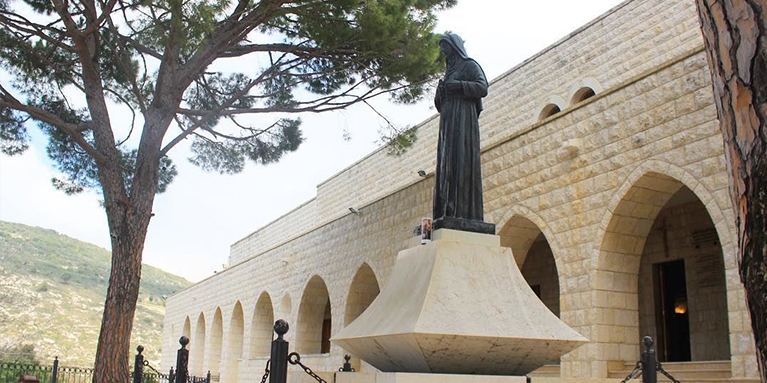
This convent was built in 1897, it belongs to the order of the Lebanese nuns. The Blessed Rafka was one of the six nuns who marked the beginning of the cloistered life in this convent, on the 3rd of November 1897. She lived there until she died on the 23rd of March 1914, confined to her bed by great sufferings. On the 27th of November 1985, His Holiness the Pope John-Paul II declared the Beatification of Rafka.
The convent of St. Joseph became famous. Visitors come daily from all places. They obtain certainly a grace and a deep conviction that the sufferings borne for the Love of Christ, gain a redeeming power.
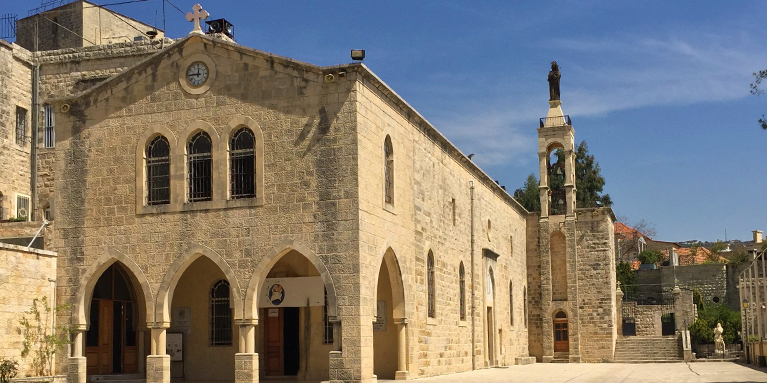
Situated on a beautiful hill in the heart of the Chouf, at 15 kilometers from the town of Saida, this convent is linked particularly to the Greek-Melkite community. Its founder is the bishop of Saida, Euthyme Saifi. He was the first one to declare the union with the Roman See. In 1711, the first constructions of the convent appeared, the iconostasis built in 1759, with Italian marble. The 7th of November 1828 the Seminary was built.
This convent was subject to many ravages, 1777, 1848, and 1860. The monks had to abandon it in 1985. It was recently returned to the monks after the end of the war. It is now a big restoration site, because it remains the main convent for all the Salvadorians in the world, In side the large church, there are two tombs, the first is to Patriarch Clément Bahouth's who resigned in 1859 and the second tomb is to father Bechara Abou Mrad's, dead in the odor of sanctity on the 22nd of February 1930.
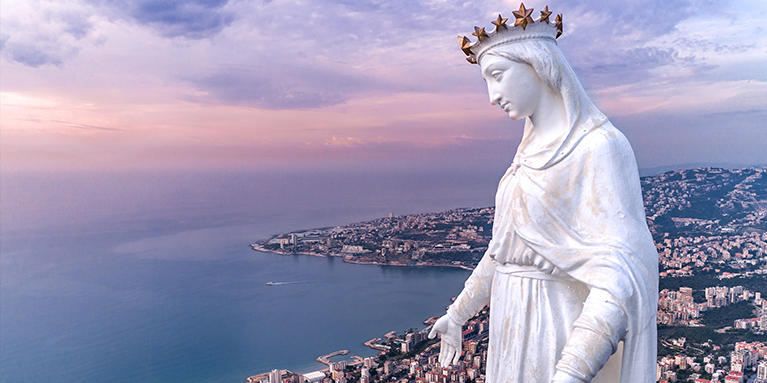
The Harissa Hill is situated at a distance of 25 kilometers from Beirut, and at a 600m altitude in the heart of Keserwan. On the hillside, there is Bkerki the Patriarchal Maronite see in Lebanon; at the top, the convent of the Paulist Greek Melkite Catholic Fathers; and at a distance of some meters the summer see of the Apostolic Nuncio in Lebanon, and just near there a convent for the Franciscan Fathers; far from there, the convent of Charfeh, the see of the Syriac Catholic Patriarchate and on the hill of Bzoummar the Armenian Catholic Patriarchate. It is not surprising then, that the attention was drawn towards the hill, which overlooks one of the most beautiful landscapes in the world, to set up there a sanctuary vowed to the Virgin Mary, the Queen of Lebanon.
In fact, When the Patriarch Elias Howayek and Mgr Carlos Duval, the Apostolic Delegate in Lebanon, decided to commemorate the fiftieth anniversary of the Immaculate Conception dogma declared on the 8th of December 1854, they both formed the project of setting up a statue of the Virgin Mary on the hill of Harissa. The statue was made in Lyon; it is of bronze covered with white paint and of 8 meters and a half long. The statue arrived to Beirut in 1906 on board of a big ship. The construction of the sanctuary was finished on the third of May 1908, with the tower-pedestal of 20meters high. On that day, the Virgin Mary was proclaimed Sovereign of the mountains and seas, and Queen of Lebanon. It is the most visited sanctuary in Lebanon, and many come walking from far away. The processions to Harissa increase during the month of May, the month of Mary.
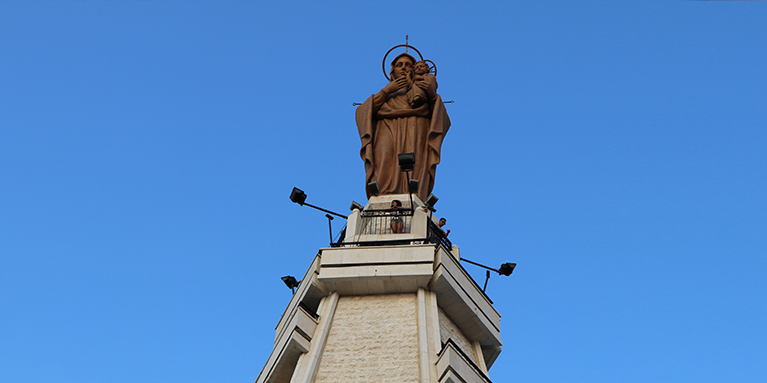
The sanctuary of the Virgin Mary of Mantara is on a very beautiful hill, beside the village of Maghdoucheh, which extends far to the sea, it over-looks the plain, which leads to Saida. It seems that this location was already chosen before Christ as a watching tower that the pagan priests used in order to see to the security of their Goddess Astarte.
The tradition tells that when Jesus came to Sidon, the Virgin Mary who accompanied him, stopped to wait for him at the top of the hill; She spent the night inside the cave named "Mantara". The King Constantin the Great responded to St. Hélène request and transformed the cave into a sanctuary for the Virgin Mary.
He erected there a tower, at the top of which he put a flame to announce that Saint Hélène his mother discovered the Christ's Gross. This tower fell down during the earthquake of 550. The king Louis IX erected there a watching tower. A shepherd once again discovered the cave accidentally in 1726; the miraculous icon of the Virgin Mary was near the altar. It is of byzantine style and dates back to the seventh or eighth century. Since then, the cave has been transformed into a place of pilgrimage for all the Lebanese confessions. In 1860, the Greek-Melkite Community became the owner, and transformed the cave into a sanctuary worthy of the Virgin Mary in 1880.
At the beginning of the sixties, Mgr Basile Khoury built a beautiful hexagonal chapel and a 28 m high tower on the top of which he erected a beautiful statue of the Virgin Mary holding Jesus in her arms, a work of the Italian artist Pierrotti. The statue is 8m and a half high.
The Virgin Mary of Mantara is the protector of the children, that's why many baptisms are celebrated there.
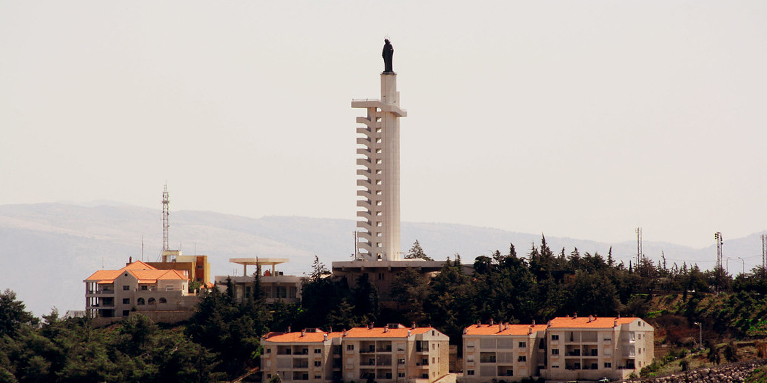
Fifty years after the inauguration of Harissa sanctuary, Mgr Euthyme Youakim had the idea, in 1958, to set up a sanctuary for the Virgin Mary on a hill over-looking Zahle and the Bekaa. An agreement was signed with the Italian artist Pierrotti, in 1961, for a Bronze statue, 9 m high. The inauguration of the sanctuary took place on the 9th of September 1968, on a very beautiful hill in Zahle. The tower is 61 meters high, and the statue of the Virgin Mary, at the top of the tower, is 9 meters high. The tower is served by an elevator, which can carry 12 persons at the same time.
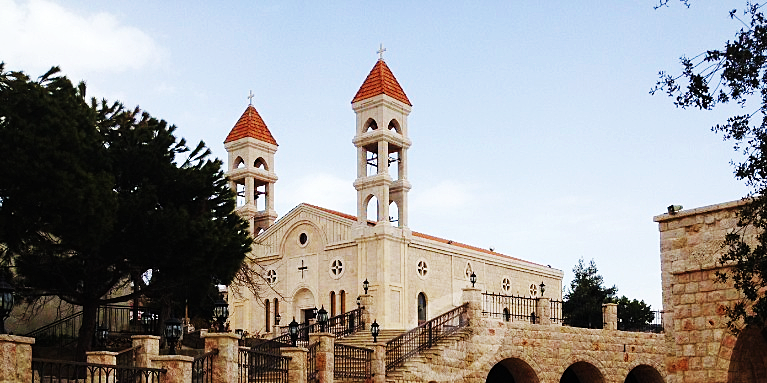
The sanctuary of the Virgin Mary of Beshouat is a pilgrimage center deep inside the Bekaa. In 1741, deep inside a small cave in the ruins, a Byzantine wooden icon was discovered, on which the Virgin Mary was painted. A church was built above the cave, and became a place of pilgrimage.
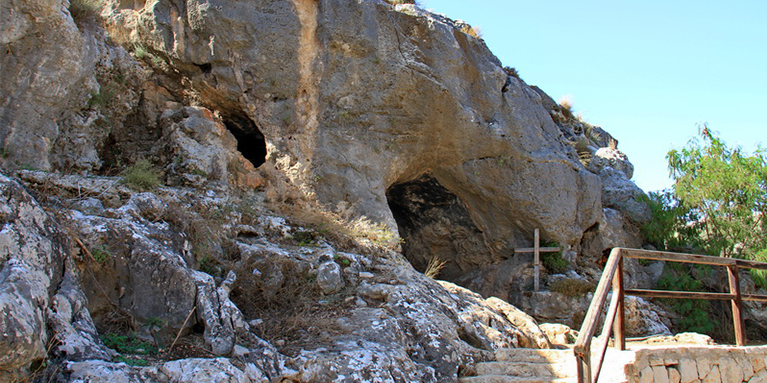
Qana is situated at 10 km from Tyre. Since 1968, the researches made by Lebanese of different scientific fields, led to arguments based on tradition, geography, and archeology and especially religious, proving that Qana is the place where the first miracle of Jesus took place. It is indeed Qana of Galilee where Jesus, at the request of his mother the Virgin Mary, transformed the water in wine. The arguments succeeded in convincing some foreign responsible people who came to Lebanon, some ambassadors and renowned writers, that Qana of Lebanon is really the Kana of Galilee.

